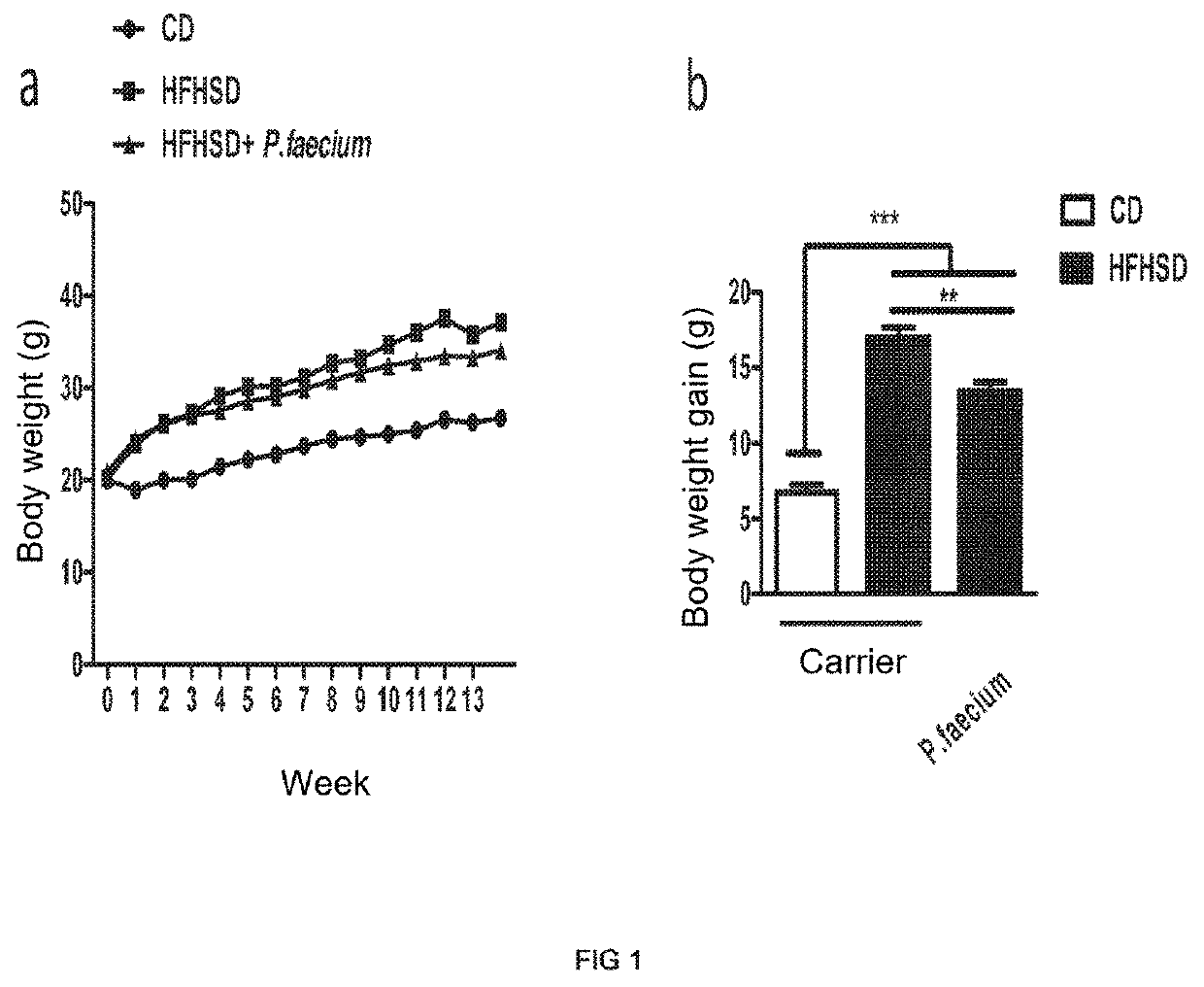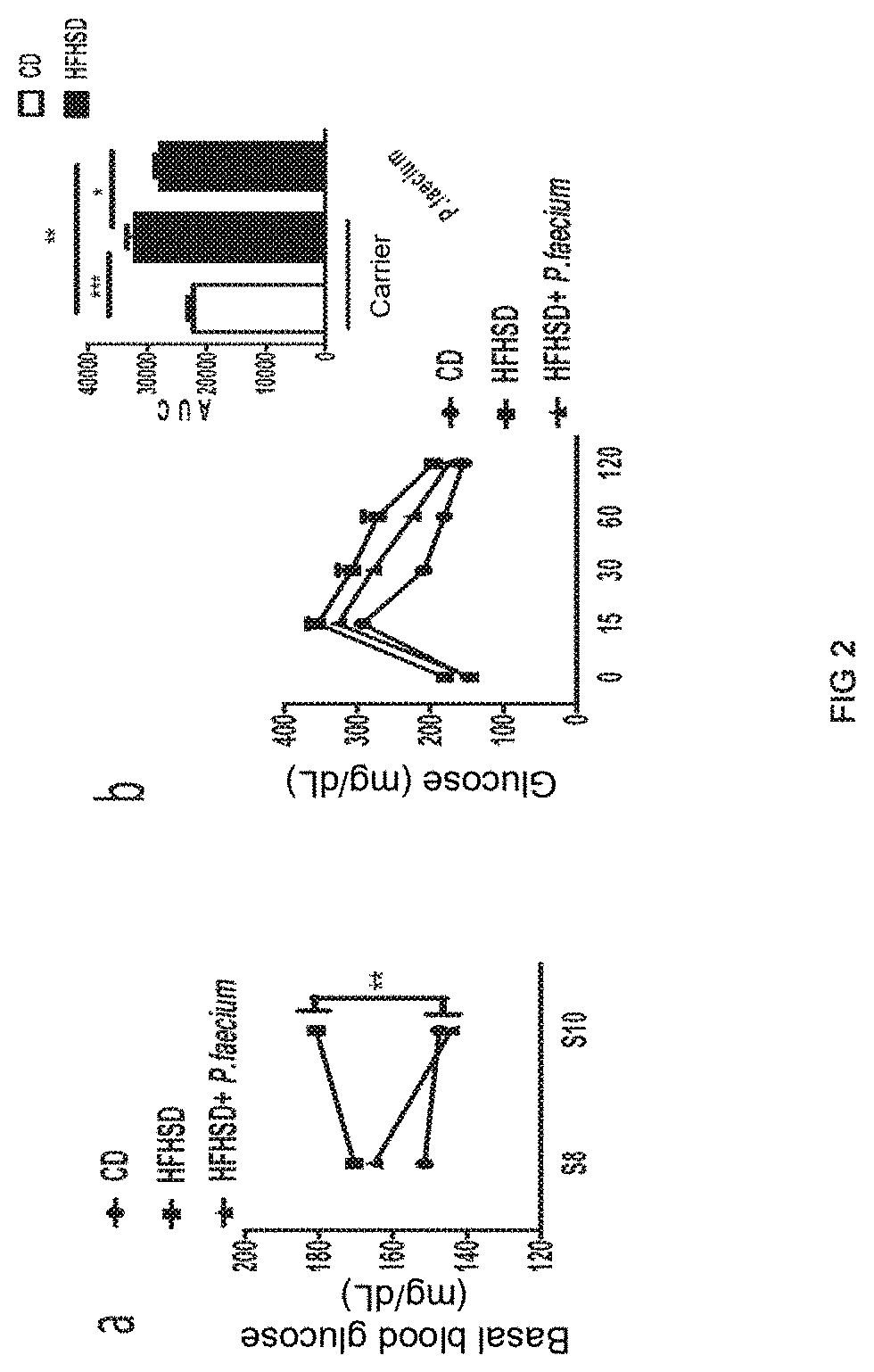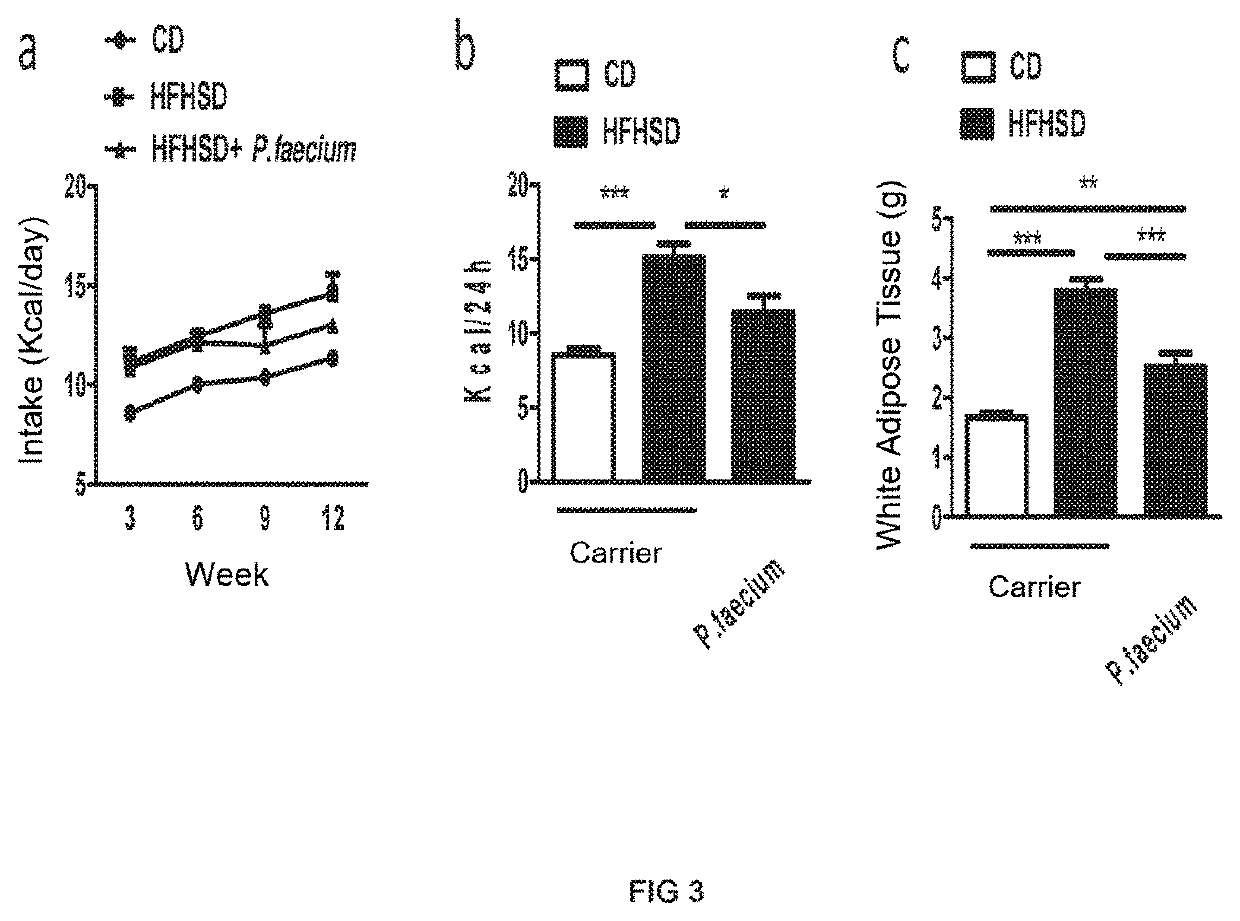Phascolarctobacterium faecium for use in the prevention and treatment of obesity and its comorbidities
a technology of phascolarctobacterium and faecium, which is applied in the direction of bacteria material, microorganisms, biochemical equipment and processes, etc., can solve the problems of increasing the risk of death, weight gain, and reducing the quality of li
- Summary
- Abstract
- Description
- Claims
- Application Information
AI Technical Summary
Benefits of technology
Problems solved by technology
Method used
Image
Examples
example 1
and Identification of the Bacterial Strain P. faecium G104 (P. faecium DSM 32890)
[0083]Different intestinal bacteria were isolated from faeces from healthy volunteers. 1.25 grams of faeces were used and diluted in 10 mM phosphate buffer with 0.05% cysteine (1:10 dilution) containing a NaCl concentration of 130 mM (PBS) and homogenised in a Lab-Blender Stomacher 400 (Seward Medical, London, 35 UK). Said dilution was inoculated in 37.5 mL of Intestinal Bacteria Medium (BM), the composition of which is based on the media recommended in previous publications (Gibson, G. R., et al., Appl. Environ. Microbiol., 54 (11): 2750-5, 1988; Lesmes, U et al., J. Agric. Food Chem., 56: 5415-5421, 2008), with some modifications designed by the inventors:[0084]Main ingredients: distilled water (1,600 mL), peptone water (4 g), NaHCO3 (4 g), CaCl2 (0.02 g), pectin (4 g), xylan (4 g), wheat bran extract (4 g), arabinogalactans (2 g), gum arabic (2 g), starch (10 g), casein (6 g), inulin (2 g) and NaCl (...
example 2
of P. faecium Based on its Capacity to In Vitro Modulate Inflammation
[0098]In vitro assays were conducted to comparatively evaluate the immunomodulatory properties of bacteria of human intestinal origin and select the strain capable of inducing the greatest anti-inflammatory response in classical monocytes and therefore with potential therapeutic interest in the treatment of obesity-associated inflammation. To this end, cell suspensions of different bacterial strains were used as a stimulus in cultures of peripheral blood mononuclear cells (PBMCs) and the number of classical monocytes and the levels of the anti-inflammatory cytokine IL-4 with respect to the pro-inflammatory cytokine IFNγ were measured by flow cytometry.
Cultivation and Stimulation of PBMCs.
[0099]From whole blood of healthy volunteers, Peripheral Blood Mononuclear Cells (PBMCs) were isolated using a Ficoll gradient (Ficoll Paque-Plus 17-1440-02, Bioscience). After treating them with a solution to lyse erythrocytes (Ly...
example 3
f P. faecium in an Animal Model of Obesity
Development of the Animal Model of Obesity and Sampling.
[0103]Adult male C57BL / 6 mice (6-8 weeks, Charles River, Les Oncins, France), kept under controlled temperature (23° C.), relative humidity (40-50%) and 12-hour light / dark cycle conditions, were fed a high-fat (45% Kcal) high-sugar (sucrose) (17% Kcal) high-calorie diet (HFHSD; D12451, Research diet, Brogaarden, Denmark) or a control diet (CD, 10% Kcal from fat, without sucrose; D12450K, Research diet, Brogaarden, Denmark) for 14 weeks. Daily, the mice fed the HFHSD diet received an oral dose of the bacterial strain object of the invention [(1×107-1×10−8) colony-forming units (CFU)] dissolved in 10% skim milk. The carrier (10% skim milk) was administered in the same way to both the control group with the obese phenotype (HFHSD) and the control group with the lean phenotype (CD) (n=10 mice per group). After 14 weeks, the mice were slaughtered by cervical dislocation in order to obtain sa...
PUM
| Property | Measurement | Unit |
|---|---|---|
| circumference | aaaaa | aaaaa |
| circumference | aaaaa | aaaaa |
| diastolic blood pressure | aaaaa | aaaaa |
Abstract
Description
Claims
Application Information
 Login to View More
Login to View More - R&D
- Intellectual Property
- Life Sciences
- Materials
- Tech Scout
- Unparalleled Data Quality
- Higher Quality Content
- 60% Fewer Hallucinations
Browse by: Latest US Patents, China's latest patents, Technical Efficacy Thesaurus, Application Domain, Technology Topic, Popular Technical Reports.
© 2025 PatSnap. All rights reserved.Legal|Privacy policy|Modern Slavery Act Transparency Statement|Sitemap|About US| Contact US: help@patsnap.com



